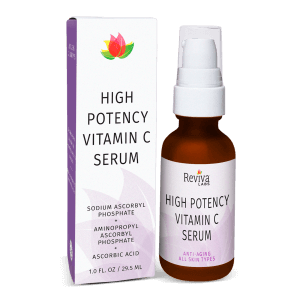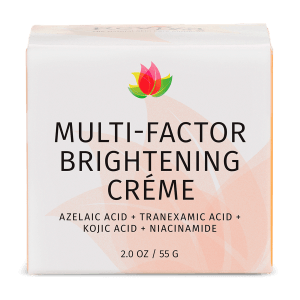Retinol
Retinol, a form of vitamin A, is a fat-soluble vitamin that plays a critical role in maintaining healthy skin, vision, and overall cell growth and development. In the realm of skincare, retinol is acclaimed for its powerful anti-aging properties and ability to improve the appearance of fine lines, wrinkles, uneven skin texture, and hyperpigmentation.
When applied topically, retinol works by penetrating deep into the skin to stimulate collagen production and accelerate cell turnover. This process helps to reveal newer, healthier skin cells, reduce the appearance of aging signs, and improve skin texture and tone. Additionally, retinol can help to unclog pores, making it beneficial for those dealing with acne and related skin concerns.
Retinol is available in various formulations, including creams, serums, and lotions, and its concentration can vary, allowing for customization based on skin sensitivity and specific skincare goals. It’s important to note that retinol can make the skin more sensitive to UV radiation, so it is recommended to use it in conjunction with a broad-spectrum sunscreen during the day.
Despite its benefits, retinol can cause skin irritation, redness, and peeling, especially when first introduced into a skincare routine or used in high concentrations. To minimize these side effects, it’s often advised to start with a lower concentration of retinol and gradually increase its usage as the skin adjusts.
Due to its effectiveness and versatility, retinol remains a cornerstone ingredient in the skincare industry, backed by extensive research demonstrating its ability to significantly improve skin health and appearance.
Retinol, also called vitamin A1, is a fat-soluble vitamin in the vitamin A family that is found in food and used as a dietary supplement. Retinol or other forms of vitamin A are needed for vision, cellular development, maintenance of skin and mucous membranes, immune function and reproductive development. Dietary sources include fish, dairy products, and meat. As a supplement it is used to treat and prevent vitamin A deficiency, especially that which results in xerophthalmia. It is taken by mouth or by injection into a muscle. As an ingredient in skin-care products, it is used to reduce wrinkles and other effects of skin aging.
 | |
 Retinol | |
| Clinical data | |
|---|---|
| AHFS/Drugs.com | Monograph |
| License data | |
| Routes of administration | By mouth, intramuscular |
| Drug class | vitamin |
| ATC code | |
| Legal status | |
| Legal status |
|
| Identifiers | |
| |
| CAS Number |
|
| PubChem CID | |
| IUPHAR/BPS | |
| DrugBank | |
| ChemSpider | |
| UNII |
|
| KEGG | |
| ChEBI | |
| ChEMBL | |
| PDB ligand | |
| CompTox Dashboard (EPA) | |
| ECHA InfoCard | 100.000.621 |
| Chemical and physical data | |
| Formula | C20H30O |
| Molar mass | 286.459 g·mol−1 |
| 3D model (JSmol) | |
| Melting point | 62–64 °C (144–147 °F) |
| Boiling point | 137–138 °C (279–280 °F) (10−6 mm Hg) |
| |
| |
Retinol at normal doses is well tolerated. High doses may cause enlargement of the liver, dry skin, and hypervitaminosis A. High doses during pregnancy may harm the fetus. The body converts retinol to retinal and retinoic acid, through which it acts.
Retinol was discovered in 1909, isolated in 1931, and first made in 1947. It is on the World Health Organization's List of Essential Medicines. Retinol is available as a generic medication and over the counter. In 2021, vitamin A was the 298th most commonly prescribed medication in the United States, with more than 500,000 prescriptions.









